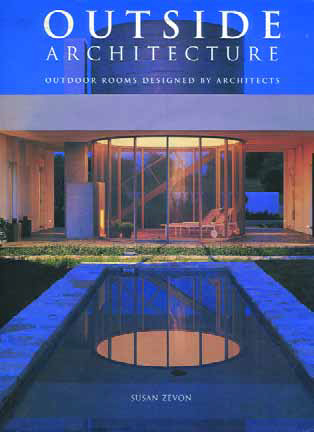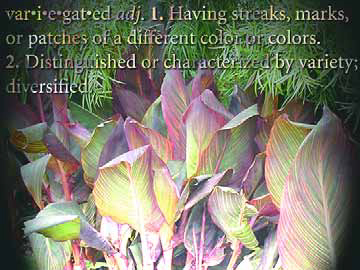ARTICLES
Advance Search
Aquatic Health
Aquatic Health, Fitness & Safety
Around the Internet
Aquatic Culture
Aquatic Technology
Artful Endeavors
Celebrity Corner
Life Aquatic
Must-See Watershapes
People with Cameras
Watershapes in the Headlines
Art/Architectural History
Book & Media Reviews
Commentaries, Interviews & Profiles
Concrete Science
Environment
Fountains
Geotechnical
Join the Dialogue
Landscape, Plants, Hardscape & Decks
Lighter Side
Ripples
Test Your Knowledge
The Aquatic Quiz
Other Waterfeatures (from birdbaths to lakes)
Outdoor Living, Fire Features, Amenities & Lighting
Plants
Ponds, Streams & Waterfalls
Pools & Spas
Professional Watershaping
Structures (Editor's Notes)
Travelogues & History
Water Chemistry
WaterShapes TV
WaterShapes World Blog
Web Links
Around the Internet
Aquatic Culture
Aquatic Technology
Artful Endeavors
Celebrity Corner
Life Aquatic
Must-See Watershapes
People with Cameras
Watershapes in the Headlines
At its most basic, public art creates spaces in which people experience art without paying hard-earned dollars to own it or going to a museum or gallery to see it. Public art is also about giving everyone within eyeshot new types of experiences amid their daily routines. Perhaps it's an object they'll pass on the way to the subway or an environment they'll spot out of the corner of an eye as they drive to the grocery store. Maybe it's a place where people gather to eat lunch or a landmark for arranging meetings with friends. Whether it's familiar to the viewer or sneaks up unexpectedly, the work becomes
Amazing things can happen when great architects think beyond the walls and tackle exterior design as part of their projects. That's a message that comes through loud and clear and repeatedly in Susan Zevon's Outside Architecture (Rockport Publishers, 1999). Throughout the book's 190 generously illustrated pages, she covers the work of 18 architects - using multiple examples from each while focusing not so much on individual projects but rather on key features, styles and design philosophies that cut across the range of the fine work on display. About three quarters of the projects are residential and range stylistically from classic to modern at locations scattered across the United States and Mexico. Nearly all of the architects were new
Take it from someone who has ripped out and replaced more than his share of old and failed swimming pools through the years: Some things are worth keeping! That's why it's so wonderful to find an old pool - a product of the industry's infancy - that has stood the test of time and has won the right to be left in place. This is the first in a series of columns on one such pool. It's also the start of a story about clients who appreciate art and style and have surrounded themselves with objects and spaces of true value and beauty. I knew right away that
Out of all the varieties I mentioned in last month's discussion of maples, my favorite was (and still is) the variegated maple. Beyond the simply spectacular nature of that particular tree, what I love most about them is their variegated leaves. This is clearly a personal preference. In fact, I've come across many clients and friends who have a specific disdain for variegated
Perception is reality: Regardless of whether that's right or wrong, you are judged by appearances. And there's no escaping those judgments because it's basic human nature. If your own appearances mean ugly-looking vehicles, sloppy-looking employees, shabby offices and job sites that look like disaster areas, you will inevitably be judged with that image by the clients who have hired you and by anyone else exposed to those appearances. Personally, I'd rather have them focus on the quality of my work rather than on superficialities such as these, but
Occasionally, we run pairs or sets of articles that seem to have nothing in common at first glance, but that actually, on closer examination, harmonize in unexpected and important ways. To be sure, we quite deliberately revisit key themes throughout the pages of all of our issues, but sometimes, it seems, the most powerful music
There's no room for guesswork when it comes to structural engineering, says Ron Lacher of Pool Engineering, Inc., and that's especially true when it comes to concrete structures designed to contain water. Here, he opens a series on structural fundamentals related to watershapes by defining the need for precise structural planning and careful attention to workmanship - the keys, he says, to achieving a project's aesthetic and functional goals. Despite the apparent intricacy of any good set of engineering drawings and contrary to what many people think, structural plans for concrete watershapes are pretty cut and dried. At the most basic level, the art and science of structural engineering deals with predictable forces placed upon structures and with the construction techniques and materials required to counteract those forces. The basic mathematic calculations are straightforward stuff, and everything runs in accordance with building codes that
The notion that water can be used to treat physical problems and conditions is not new. In fact, when you study the history of watershaping and aquatic design, one of the first things you learn is that the ancient Romans might actually have had a better grip on the healing and nurturing powers of water than we ever will. In our own work in designing and installing environments that nurture the spirit and invigorate the body, we pursue that Roman heritage as best we can - and always keep water in mind as a key component. The project described in this article stands as one our most dramatic explorations of the curative power of water to date. The pool, spa and
Just as few sounds blend so beautifully or evoke such sensations of peace and calm as the sweet tones of birds singing along with the relaxing music of moving water, I'd also have to say that few sights in nature delight the eye more than watching migrating robins queuing up for a bath, hummingbirds darting through a mist or a bold vireo "plunge bathing" in a rippling pool. For most of my life, I've been inspired to observe the beauty and freedom of birds and am among those who have spent hours in the wild hoping to catch a glimpse of a
Back in February's WaterShapes, I stepped a bit beyond the usual in discussing Harvests of Joy by Robert Mondavi, noting that I'd read the book based on a recommendation from fellow WaterShapes columnist Brian Van Bower. I also mentioned that the book was one of the most important I've come across in recent years. This time around, I'd like to review another of Brian's recommended books - one he suggested during a seminar I recently attended and which has also proved to be wonderfully useful and extremely influential: Samurai Selling: The Ancient Art of Service in Sales by Chuck Laughlin and Karen Sage with Marc Bockmon (St. Martin Press, 1993). Until I read this book, my sense of what Samurai were all about was based on no more than warrior movies and video games. What I learned instead is that Samurai based their lives entirely on a concept of service (of which warfare was only a small part). The authors use the philosophy of the Samurai to define






















